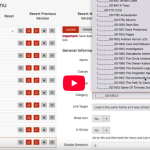
July 5,2023
The Different Ways to Sell Online
The convenience and accessibility of ecommerce platforms have opened up a world of opportunities for businesses of all sizes.
When selling online, however, there are different ways you can look to do this.
Standard ecommerce store
Drop-shipping
Affiliate selling
This article will explore the different ways to sell online and discuss the advantages and disadvantages that come with each method. This way you will be able to make an informed decision that aligns with your goals and resources.
Why this is important to know
In today’s digital age, selling online has become an essential part of any successful business strategy. With the rise of ecommerce, drop-shipping, and affiliate selling, businesses have a range of options to sell online and reach a wider audience.
Each method of online selling comes with its own set of pros and cons. For those on a tight budget or lacking storage space, drop-shipping offers a convenient solution by allowing sellers to partner with suppliers who handle inventory and shipping. On the other hand, affiliate selling allows individuals to earn commissions by promoting products without the need for inventory management.
When deciding which method is right for your business, it’s important to consider factors such as your budget, available resources, and marketing strategy. While drop-shipping may be ideal for those just starting out, affiliate selling can be advantageous for individuals with strong marketing skills who know how to build an online presence.
Ultimately, the key to successful online selling lies in finding the approach that aligns best with your goals and resources. Whether you choose ecommerce platforms or opt for more specialised methods like drop-shipping or affiliate selling. Ultimately, this decision could be the line between whether your business is successful or not.
What is Ecommerce?
Ecommerce refers to the buying and selling of goods and services over the internet. It eliminates the need for physical stores and bridges the gap between businesses and consumers in the virtual realm. It has changed the way we engage in commerce. One of the key aspects of ecommerce is the online store or website, which acts as a digital storefront for businesses.
The Pros of Ecommerce
Your Own Supply
One of the main pros of selling through ecommerce is that you will be selling products you have in your inventory, whether these are your own or purchased from elsewhere. Ecommerce provides a platform for businesses to sell products directly to consumers, allowing for greater control over products and branding. However, this requires careful planning and investment in areas such as website development, inventory management, and fulfilment logistics.
Personalisation can help with competition.
Selling through ecommerce gives businesses the opportunity to personalise their products, and how they sell them; this means businesses have control over what they offer and how. You could offer discounts in order to give you that edge over competitors, or alternatively further personalise your actual products as these are your own.
Furthermore, owning a successful website is competitive, especially when you want to sell products. Selling through ecommerce is great. as mentioned previously, you get the bonus of being able to create discounts or personalise the selling process. This is a sure way to draw clients in and keep them around. One example of this might be allowing clients to bulk order your products. One study found that ‘You can outsource fulfilment logistics, so your customers can enjoy benefits like 2-day shipping and easy returns processing.’ All of which can help to give you that edge over your competitors.
Inventory and shipping
With a standard ecommerce store, you will be selling products that you have in stock. This gives you greater control and knowledge of what is available. You can also offer multiple shipping options (3-5 days, next day etc.), as you have ownership and control of the stock and can tell what is available.
The Cons of Ecommerce
Stock storage space
When it comes to selling as a standard ecommerce business, one of the issues you might encounter is inventory space. As you stock the items you sell, you will need storage space for them, which can be an expensive endeavour. There may also be steps needed to be taken to ensure that products don’t degrade or get damaged overtime.
Packing and shipping
As you are selling products you stock yourself, you will need to handle all the shipping logistics. This can add an extra element, such as having picking and packing staff, making sure to prioritise express delivery orders as well as more, which can make ecommerce selling more difficult.
What is drop-shipping?
Drop-shipping allows businesses to sell products online without having to handle things like storage and delivery. Instead of creating, buying and managing your own stock, businesses list products from third-party suppliers on their website and then have the supplier directly ship them to their customers. This eliminates the need for storage space, eliminates investment in inventory, and frees up your time for marketing and customer service.
The pros of Drop-shipping
No Heavy Lifting
One of the many benefits of drop-shipping is that you don’t have to deal with areas such as storage and delivery, their products are supplied by third parties, and when purchases are made, their products are shipped directly to the customer.
As the supplier takes care of these aspects, businesses can instead focus on marketing and sales. All you need is a website or an online store to showcase your products and start selling.
This also means that there are lower overhead costs.
Lower Costs
Unlike traditional retail models, you don’t need to purchase inventory upfront. Instead, you only pay for the products once you’ve received an order from a customer. This eliminates the need for inventory storage and staff to pack and send. In fact, one study found that ‘many successful drop-shipping stores are run as home-based businesses, requiring little more than a laptop and a few recurring expenses to operate’.
Simple Set up
Running a drop-shipping business is a lot easier compared to others as you don’t deal with the products yourself, this is all done by third parties. This means there are no concerns regarding the following: warehouse costs, packing and shipping, and managing stock levels. All you really need is the website to get started.
The pros of drop-shipping
Beholden to supplier stock
As a drop shipper, businesses will rely heavily on their suppliers to fulfil orders and deliver products to their customers. If the supplier fails to meet expectations, it can result in delayed shipments or out-of-stock products, which can negatively impact your reputation and customer satisfaction.
Additional costs
If a business works with more than one supplier, there can be complications. Most drop shippers products will be sourced through a number of different suppliers. This means you have no control over the supply chain. This can make your business incur extra costs, such as if a customer orders separate products from different suppliers, these can add additional costs, not all of which are wise to charge the customer for if you want to remain competitive.
Furthermore, if a specific product is popular, suppliers may end up prioritising their own orders rather than your own business.
You’re an intermediary for problems.
If a problem arises with an order, such as being shipped to the wrong address, or an incorrect item is sent, the customers will come to you for a solution. You will then have to deal with the supplier to get the problem resolved. This can lead to unhappy customers, who are waiting on you for feedback, while you are waiting on an update from your supplier, leaving you with little control to help resolve the situation. This can be further complicated when you have orders that contain products from multiple suppliers.
What is Affiliate Selling?
Affiliate selling has become a popular way for individuals to make money online. By promoting other people’s products and earning a commission for every sale made through their referral. One study noted that ‘Commission rates for affiliate sales vary depending on the company and the offer. On the low end, you’ll earn about 5% of the sale, but with some arrangements, you can earn as much as 50%’.
So what are the Pros?
Easy to set up
One of the biggest advantages of affiliate selling is the low barrier to entry. You don’t need to create your own product or service, which means there are no added costs for stock or manufacturing. All you need is a website or platform to promote and sell the products and an affiliate link to track your sales. This makes it an affordable option for those who want to start a business with limited funds.
Earn based on orders
Affiliate selling is normally based on an order being placed from your referral link. For example, Amazon offers commission on orders in a 24-hour window after clicking your link. This means that, even if you direct traffic to the website, but they order something different than you were advertising, you will still get a commission.
All the heavy lifting is done for you.
One of the difficult parts of running a business is the added costs of inventory and actually having a place to store your products. As an affiliate, all you have to worry about is promoting the products and selling them on for a commission. This means the added stress that other methods bring is no longer a thing. This includes any delivery and storage issues that might come with the product.
Sales are with the seller.
Unlike with drop-shipping, where orders placed with the drop shipper means the contract is with them. Affiliate selling is merely directing people to the seller’s site and getting a commission from the sale, that is where your involvement stops, so the contract is with the seller. Any issues or problems that arise are with the seller, not you.
What are the cons?
Competition
With the popularity of affiliate marketing, there will likely be significant competition in almost every niche. You need to find creative ways to stand out from the crowd and convince potential buyers to choose your affiliate link over others.
This may require added work, such as creating effective marketing strategies in order to draw in potential customers. This means creating compelling content and being able to adapt to the constant changes in the market.
Brand image risks
As an affiliate marketer, you rely on the product owner to fulfil orders, handle customer service, and provide support. If the product owner fails to meet their responsibilities, it can negatively impact your reputation and income. It is essential to choose reliable and reputable product owners to avoid any potential problems. This means that while all the heavy lifting is done for you, it is essential that you thoroughly check who you are selling for to ensure that you won’t run into these issues.
Payouts
While affiliate marketing has the potential for passive income, it can also be unpredictable. Your earnings may vary from month to month, depending on factors such as the demand for the product, your marketing efforts, and changes in the market. It requires consistency, adaptability, and continuous improvement to maintain a stable income stream.
The payout for affiliate sellers will depend on the decided commission rate. Due to this, there can be the issue of not being able to make a real profit without joining multiple affiliate programs. One study notes that ‘joining several affiliate programmes rather than just one is the best way to earn’.
With this in mind, make sure you do your research before you sign up to be an affiliate seller.
Conclusion
The world of online selling offers a wide range of options for businesses to explore. Whether you’re considering ecommerce, drop-shipping, or affiliate selling, each method has its own set of pros and cons that should be carefully considered.
The choice of online selling method will depend on factors such as budget constraints, available resources, desired level of control, and personal preferences. It is important to carefully evaluate these areas before making a decision by understanding the different methods available and weighing their pros and cons against your business.




